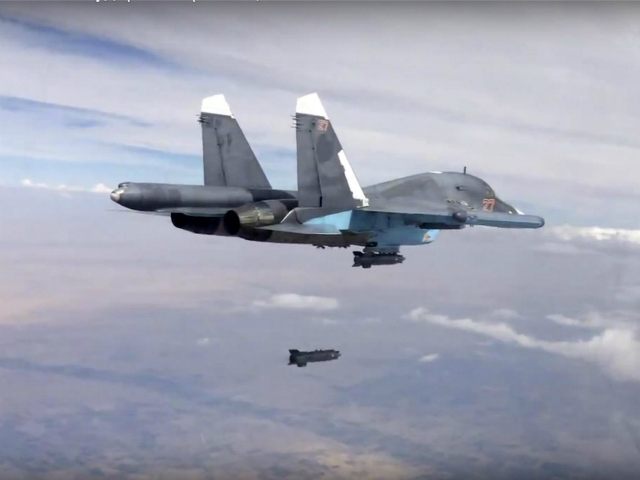Human Rights Watch (HRW) reported that the Russian government used advanced cluster munition in an airstrike near Aleppo, Syria.
These bombs contain “multiple explosive submunitions.” Aircrafts, sea vessels, and ground transportation can fire off these bombs. They then open “mid-air to release tens or hundreds of submunitions, which can saturate an area up to the size of several football fields.” HRW received photographs and videos that show Russian troops using the bombs from their aircrafts and the ground.
“It’s disturbing that yet another type of cluster munition is being used in Syria given the harm they cause to civilians for years to come,” declared Nadim Houry, the deputy Middle East director at HRW. “Neither Russia nor Syria should use cluster munitions, and both should join the international ban without delay.”
The 2008 Convention on Cluster Munitions banned the use of cluster bombs:
Cluster munitions are unacceptable for two reasons. Firstly, they have wide area effects and are unable to distinguish between civilians and combatants. Secondly, the use of cluster munitions leave behind large numbers of dangerous unexploded ordnance. Such remnants kill and injure civilians, obstruct economic and social development, and have other severe consequences that persist for years and decades after use.
HRW could not determine if “Russian or Syrian forces were responsible for the attack” on October 4.
Local media posted pictures of the cluster bombs near Kafr Halab that allegedly “show the remnants of SPBE sensor fuzed submunitions.” Activists posted videos that “show explosions in mid-air consistent with attacks with SBE submunitions.” However, HRW could not confirm details since no one could conduct an investigation.
HRW claims the Syrian government used cluster bombs since 2012 in their civil war. They also believe the Islamic State (ISIS/ISIL) used “cluster munition rockets in the second half of 2014.”
No sources have reported casualties in Kafr Halab.
Russian media reported that the country is using “time-proven bombs and missiles equipped with state-of-the-art system guidance. Precision weapons are used from high altitudes to exclude encounters with portable air-defence systems.” Their first round of attacks killed at least 17 civilians in northern Homs.
“Reports of civilian casualties in its first strikes raise concerns that Russia is not taking sufficient precautions to avoid civilian casualties in Syria,” continued Houry. “After enduring so much, the last thing Syrians need would be more indiscriminate attacks from the air.”
Russia began more airstrikes in Syria on Monday. The Russian Defense Ministry announced they “flew 64 sorties over Syria in the last 24 hours, destroying ISIS positions, training camps and ammunition dumps.”

COMMENTS
Please let us know if you're having issues with commenting.